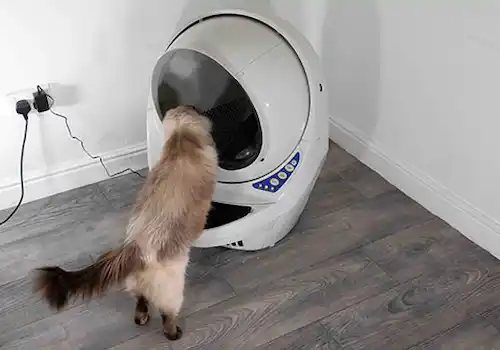Worried your cat might not be a healthy size? Take a look at the Cat Size-O-Meter by the PFMA to find out if your cat is a healthy size.
The Cat Size-O-Meter is based on the Body Condition Score system used by vets to assess whether a cat is a healthy size. It's a simple, easy to use chart, with step by step instructions for doing this at home. Vets often refer to it as a technical cuddle and cats love it as it encourages you to get hands on!
The areas to gently check are the ribs - these should feel like pens in a soft pencil case, whether you can see a waist indentation, your cat's belly and the lower back and hips.
If you need help using the chart or have worries about your cat's weight why not make the most of the free weight clinics offered by many vets.
How do I know if my cat is a healthy size?
Take a look at the image below to find out how to check, and to see where your cat comes up on the Cat Size-O-Meter...
Where did your cat come up on the scale? Read our healthy diet advice for your cat if he's coming up in the 'overweight' or 'obese' sections.
Ensure to consult your vet if your cat is showing up in any section other than 'ideal'.
Feeding tips to keep your cat at a healthy size
Ensure your cat stays healthy, happy and the correct weight with these top feeding tips:
- Weigh out your cat's food at the start of each day, following the packet guidelines, then split into meals to suit your cat's feeding routine and your own lifestyle.
- One of the best ways to achieve a balanced diet is to feed according to lifestage - kitten, adult or senior food.
- Cats are obligate carnivores, which means they must eat meat.
- Consult your vet if you suspect your cat is overweight - use the PFMA's Cat Size-O-Meter and work out if your cat is the correct weight and shape.
- Most commercial cat foods are 'complete', meaning cats get all the nutrients they need from one food.
- Cats don't need treats; try playing and giving fuss to show your love. If treats are used in training, make sure this is deducted from their daily food allowance.
- Cats need constant access to fresh, clean water.
- Think about location - food must be at least half a metre from their water, bed and litter tray.
- Put bowls in a place where your cat feels safe - away from doors, cat flaps etc.
- Don't be afraid to place food bowls on a high surface that can be safely reached by your cat, but is out of the way of dogs.









